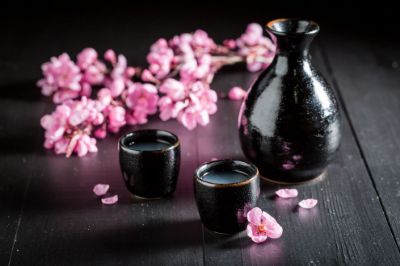Sake, often referred to as "rice wine," is an ancient and revered alcoholic beverage originating from Japan. This traditional libation, made from fermented rice, boasts a rich cultural heritage and a distinctive flavor profile that sets it apart from other alcoholic drinks. Integral to the world of sake production are sake barrels, or "taru" in Japanese, which play a significant role in shaping the character of this iconic Japanese beverage. In this article, we will explore the essence of sake and the importance of sake barrels in its production and culture.
Understanding Sake
Sake, also known as nihonshu, is a fermented rice wine with a unique and complex flavor profile. While it may be called "rice wine," the production process differs significantly from that of grape wine. Key components of sake include:
Rice: Sake is primarily made from rice, with a specific variety known as "sakamai" being cultivated for this purpose. The rice grains are polished to remove the outer layers, exposing the starchy core, which is the source of fermentable sugars.
Water: High-quality water is crucial in sake production as it is used at various stages, from rinsing and soaking the rice to diluting the final product. Different regions in Japan are known for their unique water sources, which contribute to regional sake variations.
Koji: Koji mold (Aspergillus oryzae) is responsible for converting the rice starches into fermentable sugars. It's a critical component of the sake-making process.
Yeast: Sake yeast strains are carefully selected for fermentation. These yeast strains contribute to the flavor and aroma of the final product.
The sake-making process involves multiple stages, including rice polishing, brewing, fermentation, pressing, and sometimes aging, each of which requires precision and expertise. The result is a diverse range of sakes, from light and floral to rich and full-bodied.
Sake Barrels: Symbols of Tradition and Craftsmanship
Sake barrels, or taru, are more than just vessels for storing and aging sake; they represent centuries of tradition, craftsmanship, and cultural significance. Here's why sake barrels are so important:
Aging Sake: Historically, sake was aged in wooden barrels. The porous wood allowed for gradual oxidation and interaction with the wood, which added depth and complexity to the sake's flavor profile. Oak and cedar barrels are commonly used, each imparting distinct characteristics.
Ceremonial Role: Sake barrels are frequently used in Japanese celebrations and ceremonies, symbolizing good fortune, prosperity, and blessings. They are often displayed at weddings, festivals, and shrine dedications.
Craftsmanship: Crafting sake barrels is a specialized art form, with skilled artisans known as "taru-kiji" meticulously constructing them. These craftsmen employ traditional techniques passed down through generations, resulting in barrels of exceptional quality and durability.
Variety of Sizes: Sake barrels come in various sizes, from small decorative barrels to large ones used for storage and transport. The choice of barrel size depends on its intended use and the preferences of the sake brewery.
Modern Usage of Sake Barrels
While modern sake production often relies on stainless steel tanks for fermentation and storage due to their precision and hygiene benefits, the use of sake barrels remains significant. Many sake breweries continue to age premium sakes in barrels to develop nuanced flavors and aromas.
In addition to traditional wooden barrels, smaller barrels have gained popularity for experimental aging, similar to trends in the whiskey and wine industries. These smaller barrels allow for quicker flavor infusion and more controlled experimentation, leading to innovative and unique sake expressions.
Conclusion
Sake is more than just a beverage; it's a window into Japanese culture, tradition, and craftsmanship. Sake barrels, with their symbolic significance and role in shaping the flavor of sake, embody the essence of this revered drink. As you savor a glass of sake, remember the centuries-old traditions and artistry encapsulated in each drop, making it a truly unique and cherished part of Japanese heritage. Kanpai!

